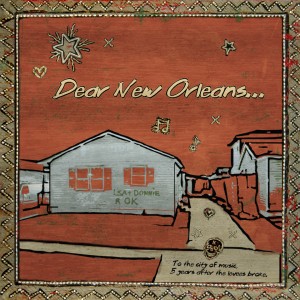
“I have a very low tolerance for hippie bullshit,” says Tim Quirk. “There’s nothing more blind than a do-gooder that is just doing it for their ego or to relieve some kind of guilt. It’s rare to see someone who is just doing good work because they are completely passionate about a cause or set of causes. And that’s why I love Air Traffic Control and people like Erin Potts, and Jordan Hirsch. ”
Dear New Orleans is Air Traffic Control’s musical response to Chris Rose’s “Dear America” letter written shortly after Katrina. Dear New Orleans will be released Tuesday to mark the fifth anniversary of Hurricane Katrina, and it’s part of Air Traffic Control’s ongoing relationship with New Orleans. The non-profit organization working for social justice has brought musicians to New Orleans for retreats, using the city since Katrina as a place to learn how they could use their position to pursue their social justice interests. For the fifth anniversary of Katrina, the organization asked alumni of its retreats to release songs about New Orleans. Over half of the 60 alumni gave permission and many recorded original tracks. OK Go wrote an original song, “Louisiana Land,” that mentions Antoinette K-Doe and other shout-outs to New Orleans. “The Crescent” is a new song by the Wrens, who haven’t put out an album since 2003, and My Morning Jacket included a live cover of “Carnival Time” recorded with the Preservation Hall Jazz Band.
Tim Quirk of Wonderlick – a former VP of Rhapsody and Air Traffic Control alum – can’t believe the response. Usually compilation albums take months of finagling with lawyers and artists. Yet for Dear New Orleans, all the obstacles were removed.
“Not only is it five years after Katrina, but we’ve only been working on this since mid-June. We got 31 tracks in the astonishingly short period of time,” he points out. “These sort of things are usually a licensing nightmare. I’m floored and honored and grateful that we got that many, and it’s a testament to (executive director) Erin (Potts), (director of special programs) Deyden (Tethong), the work they do, and just how profound an experience those retreats can be.”
Since 2006, 60 musicians have flown into Louis Armstrong and bonded over drinks in the French Quarter. They ate at Dooky Chase and spoke to the late Antoinette K-Doe and her stepdaughter at the Mother-In-Law Lounge. They attended standing gigs and watched local masters like George Porter, Jr. show off their skills. They played with Bonerama and experienced what it’s like to be backed up by three trombones. Alumni include Steve Earle, Tom Morello, Alec Ounsworth, Flobots, Nellie McKay and the Mekons’ Jon Langford, who painted the album’s cover.
Nicole Atkins, whose cover of “When the Levee Breaks” with Bonerama is on the album, says, “It was truly one of the most amazing trips I’ve ever taken. It’s the one American musical culture down there.”
Erin Potts describes the retreats as “a coming home for musicians – to be in a place where music is so loved.” She continues, “It’s inspiring to them and a deep musical experience. Also, because of what has happened and not happened with regarding to the rebuilding, the levees, and the recovery, it’s an incredible example of recovery.”
The retreats aren’t only about music. Given that the nature of the program is social justice, the artists are exposed to climate change devastation and Hurricane Katrina’s impact. The retreat’s first meeting always opens with Columnist Chris Rose’s eloquent post-Katrina letter, which Potts calls the retreat’s “entry point.”
“We felt ‘Dear America’ really captured that moment in the country,” says Potts. “It became a way of understanding what was happening.”
The musicians also meet leaders from Sweet Home New Orleans and the Gulf Restoration Network, two organizations that Air Traffic Control works closely with. The Gulf Restoration Network and Sweet Home are the recipients of the proceeds from Dear New Orleans. On Tim Quirk’s 2010 retreat, Jordan Hirsch (who Erin Potts calls a “human encyclopedia” of New Orleans musical history) took the musicians to the 7th Ward and introduced them to Mardi Gras Indians. The Gulf Restoration Network’s Aaron Viles showed them Bayou Bienvenue, the lonely remains of a neighborhood destroyed by flooding after salt water from the Mr. GO canal killed the trees that protected the area. Quirk was deeply affected by the experience, where he connected the dots between climate change devastation and the threat it poses to New Orleans and its music.
Two months after his retreat, Quirk engaged in a brainstorming session with Potts and Deyden Tethong (also from Air Traffic Control) over drinks in Washington, D.C. They were thinking of ways for Air Traffic Control to mark the anniversary of Hurricane Katrina, and Potts threw out the idea of doing an EP.
“I told her, ‘You’ve got 60 alumni. You could have a collection of tracks from almost every artists and have a fantastic collection,’” says Quirk. After leaving Rhapsody, Quirk adopted the idea as his summer project and produced it.
“I just want to give people a soundtrack to do whatever thinking they’re going to do to,” Quirk says. “If that soundtrack happens to place their mind towards a Sweet Home New Orleans or Gulf Restoration Network or New Orleans or inspire them to think of their own way to contribute, all the better. It’s not a requirement, though. If you want to put the record on and drink and dance, you can do that too.”
Dear New Orleans is officially available for download on Tuesday, August 24 at DearNewOrleansMusic.org, iTunes, Amazon.com, Rhapsody and eMusic.com. On Monday, though, it’s on sale at Amazon.com for $2.99.
Track Listing
1. OK Go: “Louisiana Land”
2. The Mendoza Line: “Catch a Collapsing Star”
3. The Nightwatchman (Tom Morello): “Midnight in the City of Destruction”
4. Janet Bean and the Concertina Wire: “My Little Brigadoon”
5. Matt Sweeney and Bonnie “Prince” Billy: “Love in the Hot Afternoon”
6. Paul Sanchez: “Don’t Be Sure” [ft. Shamarr Allen]
7. Alec Ounsworth: “Dr. So and So” [ft. Al "Carnival Time" Johnson and John Boutte]
8. Steve Earle: “Dixieland”
9. Luke Reynolds: “Flood”
10. Jon Langford: “Last Fair Deal Gone Down”
11. Laura Veirs: “I Can See Your Tracks”
12. Vijay Iyer: “Threnody”
13. Jill Sobule: “Where Is Bobby Gentry?”
14. Flobots: “Stand Up”
15. Rebecca Gates: “Doos”
16. The Wrens: “Crescent”
17. Indigo Girls: “Kid Fears” [ft. Brandi Carlile]
18. Timothy Bracy’s Collection Agency: “Matching Scars”
19. Nellie McKay: “Late Again”
20. Blind Pilot: “I Buried a Bone”
21. Mirah: “NOLA” [ft. Thao Nguyen]
22. Allison Moorer: “A Change Is Gonna Come”
23. 2nd Chief David Montana: “The Change of Heart Man”
24. Wonderlick: “The American Way”
25. Bonerama: “Mr. Go”
26. Thao Nguyen and Bonerama: “Body”
27. Erin McKeown and Bonerama: “Blackbirds”
28. Nicole Atkins and Bonerama: “When the Levee Breaks”
29. Mike Mills and Bonerama: “Ohio” [ft. Wayne Kramer and Dave Herlihy]
30. Wayne Kramer and Bonerama: “Kick Out the Jams” [ft. Mike Mills, Erin McKeown, Nicole Atkins, and Martin Perna]
31. My Morning Jacket and the Preservation Hall Jazz Band: “Carnival Time”

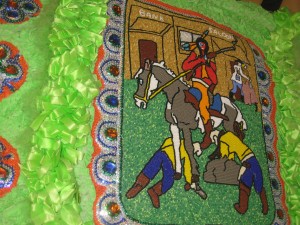
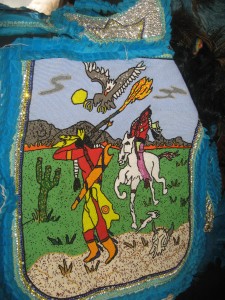
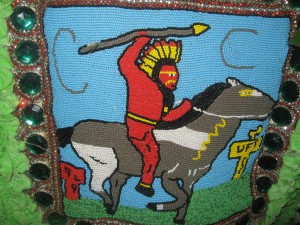
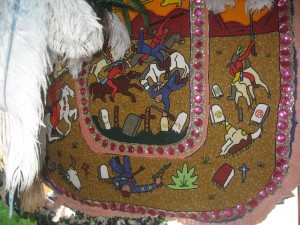
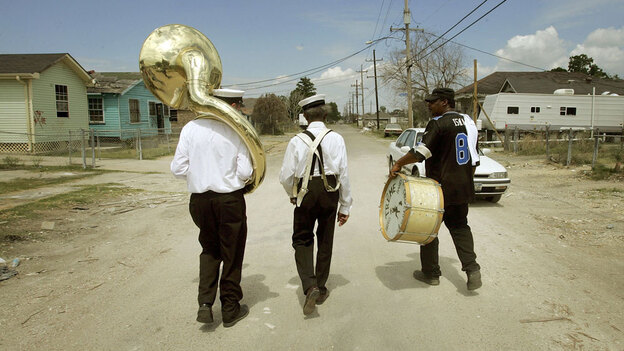




















 .
.













